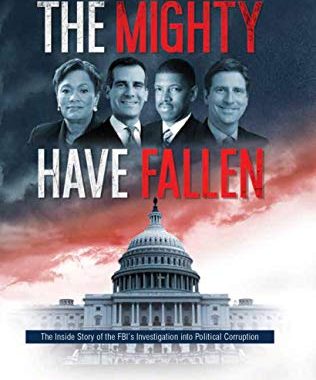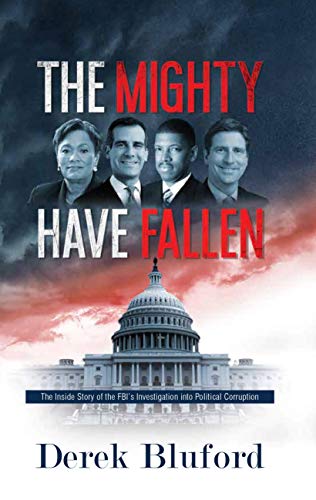(Photo by Win McNamee/Getty Images)
We’ve made it to the end of the political debate season and while no one actually wants to have to watch another one of these things, the alternative is the Giants and the Eagles, so what are you going to do? Besides, who is Trump not going to disavow this time? We’ve already had him stick up for white supremacists and QAnon… North Korea? Russia? New Coke?
Oh, who are we kidding, it’ll be Rudy.
As always, we’ve compiled a drinking game to make the evening’s festivities a little easier to take for the legal professionals out there. There shouldn’t be many opportunities to discuss courts tonight, but if past iterations of this game are any indication, don’t plan on going to work tomorrow.
Unless otherwise indicated, take a sip when these are mentioned:
“Supreme Court”: The topics, we’re told, will be: Fighting Covid-19, American Families, Race in America, Climate Change, National Security, and Leadership. Given that the Senate Judiciary Committee just voted to rewrite decades of precedent and the former Vice President pitched the ultimate bureaucratic court reform punt, it’s hard to believe the Court won’t make an appearance in some form. But not landing on the approved topic list suggests we might avoid a true overdose of mentions.
Any Supreme Court case: But… man… if families ends up talking about Obergefell and Roe, and climate change starts talking about EPA cases, and leadership veers into the ACA. Cancel your Saturday plans too.
Judicial Superlatives (see instructions): If a judge or the courts themselves, one sip for every letter in the attached superlative. Example: “Our great Supreme Court” is five sips. “The tremendous Amy Coney Barrett” a whopping 10 sips. “The antidisestablishmentarian 7th Circuit” gives you an option to quit the game for your own safety.
Chevron (ask a nearby expert how much they think you should drink): Neither of these guys is in the weeds enough to get into this during the climate talks, right?
“Court-Packing”: Much like “fake news,” this one started as a left-leaning rallying cry and has morphed into a Republican attack. Perhaps this comes in under “leadership”?
“Court Expansion” (don’t drink, just look at your beer and know that you really should be taking a sip): Can Joe Biden make fetch happen?
Voting Rights Act: This is one of the most important topics under the general heading of Race in America and something that makes the Amy Coney Barrett confirmation uniquely terrifying.
Bork (drink until you think it’s the 80s again): If both-sideism gets back to Biden opposing Bork, it’s a red letter day for legal nerds.
Hunter Biden: The exception to above is for every time Trump begs off of the actual topic to try and say something about Hunter Biden, child pornography, Burisma, or deals with Chinese businesses.
MUTE: Sip every time that mute button is invoked. This one could go either way. I could see it being a big deal, but I also could imagine this being a lot tamer based on the backlash over the last debate.
The Clintons: The Maxwell deposition mentions Bill Clinton. How often will that come up?
Specific Pharmaceutical Namechecked: He’s got to talk about COVID and he’s going to tout some treatment. Regeneron? Remdesivir? Hydroxychloroquine? Lysol? The Spice Melange?
Michael Flynn: No national security or leadership debate would be complete without pointing out that the administration’s first national security advisor has pleaded guilty and awaits sentencing.
Fake Crimes: Whenever a candidate pledges to use the DOJ to “get to the bottom of” some possible crime, like Borat “criminally” deceiving Rudy or Benghazi.
John Durham (finish your drink): Russiagate’s Ultimate Nullifier has basically fizzled at this point but its eventual revelation has survived as an article of faith among the conspiracy theorists out there.
Jeffrey Toobin (hop on Zoom and finish your drink): Is there any reason to bring this up? No. Can I credibly imagine hearing Trump try to tie Biden to “liberals” like “Creepy Toobin“? Yes.
Amendments (see description): Shots corresponding with the number of the amendment when mentioned. In other words, one shot for the First Amendment, Two shots for the Second Amendment, etc. So far we’ve avoided the Twenty-Fifth… but Trump’s had COVID since then so who knows.
 Joe Patrice is a senior editor at Above the Law and co-host of Thinking Like A Lawyer. Feel free to email any tips, questions, or comments. Follow him on Twitter if you’re interested in law, politics, and a healthy dose of college sports news. Joe also serves as a Managing Director at RPN Executive Search.
Joe Patrice is a senior editor at Above the Law and co-host of Thinking Like A Lawyer. Feel free to email any tips, questions, or comments. Follow him on Twitter if you’re interested in law, politics, and a healthy dose of college sports news. Joe also serves as a Managing Director at RPN Executive Search.





 Jill Switzer has been an active member of the State Bar of California for over 40 years. She remembers practicing law in a kinder, gentler time. She’s had a diverse legal career, including stints as a deputy district attorney, a solo practice, and several senior in-house gigs. She now mediates full-time, which gives her the opportunity to see dinosaurs, millennials, and those in-between interact — it’s not always civil. You can reach her by email at
Jill Switzer has been an active member of the State Bar of California for over 40 years. She remembers practicing law in a kinder, gentler time. She’s had a diverse legal career, including stints as a deputy district attorney, a solo practice, and several senior in-house gigs. She now mediates full-time, which gives her the opportunity to see dinosaurs, millennials, and those in-between interact — it’s not always civil. You can reach her by email at 




 Joseline Jean-Louis Hardrick, Esq. is a professor at Western Michigan University- Thomas M. Cooley Law School’s Tampa Bay Campus, founder of Diversity Access Pipeline, Inc.’s Journey to Esquire® Programs, a children’s book author, social entrepreneur, and a mommy lawyer. For more information, visit
Joseline Jean-Louis Hardrick, Esq. is a professor at Western Michigan University- Thomas M. Cooley Law School’s Tampa Bay Campus, founder of Diversity Access Pipeline, Inc.’s Journey to Esquire® Programs, a children’s book author, social entrepreneur, and a mommy lawyer. For more information, visit 



